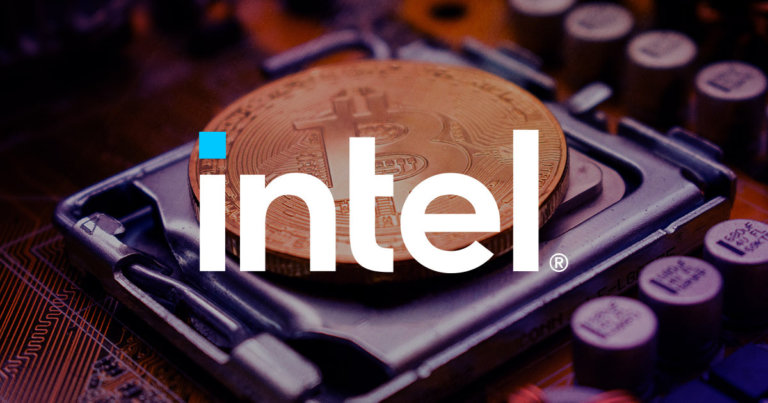 What might Intel’s low-voltage Bitcoin mining chip mean for the future?
What might Intel’s low-voltage Bitcoin mining chip mean for the future? What might Intel’s low-voltage Bitcoin mining chip mean for the future?
Intel will present its new Bitcoin ASIC chip next month, will this solve the energy consumption problem of Proof-of-Work mining?

Cover art/illustration via CryptoSlate. Image includes combined content which may include AI-generated content.
Intel may soon enter the Bitcoin mining business with its new “Bonanza Mine” chip, described as an “ultra-low-voltage energy-efficient Bitcoin mining ASIC.”
At present, little is known about the chip or Intel’s plans regarding it. Details of the chip emerged from the International Solid-State Circuits Conference (ISSCC) program schedule.
The ISSCC is an industry-specific event that will run for eight days from February 20th, 2022.
Page 27 of the program shows a presentation of the Bonanza Mine chip scheduled for February 23rd at 07:00 PST. But other than that, no further information is available at this time.
An ultra-low-voltage energy-efficient ASIC could revolutionize the Bitcoin mining game. Then again, in the long run, it may make an already highly competitive industry more cutthroat.
Environmental concerns over Bitcoin mining
Critics say Bitcoin mining is heavily reliant on fossil fuels, making the mining process environmentally damaging. But contradictory reports claim the network runs on 75% renewable energy, making this argument invalid.
Either way, what cannot be disputed is Bitcoin’s electricity usage. Over the years, as the BTC hash rate has grown, so too has the network’s electricity consumption (as expected).
Cambridge University estimates that the Bitcoin network consumes 134.75 TWh of electricity a year. For comparison, this is greater than the electricity consumption of Ukraine and Norway.
If predictions are to be believed, this will grow worse with time.
Speaking to the FT, Erik Thedéen, the European Securities and Markets Authority vice-chair, has renewed calls for a European-wide ban on Proof-of-Work (PoW) mining. Thedéen called PoW mining a “national issue” in respect of his home country of Sweden. He warned that it poses a severe threat to meeting climate change targets.
In conjunction with a PoW mining ban, Thedéen recommends encouraging less energy-intensive Proof-of-Stake (PoS) mining.
Might Intel’s low-energy Bitcoin mining ASIC be a viable solution to these concerns?
What is the benefit of low-energy ASICs?
The average cost to mine a Bitcoin comes in at around $7,000 to $11,000, making it highly profitable to mine with a current price of $41,500.
Mining entities compete by utilizing the most powerful ASIC equipment. The higher the equipment’s hashing power, the more tries it can make to guess the hash target correctly and win the block reward.
Over the years, this has led to increasingly powerful and expensive miners being developed, to the point that Bitcoin mining is reserved chiefly for corporations with deep pockets.
The specs of Intel’s Bonanza chip aren’t known at this time. But being low energy, miners could benefit from lower electricity costs (thus greater profitability). And the consumption argument put forward by environmentalists would carry less weight.
But in the long-term, lower electricity mining costs may not make any difference. One Slashdot user commented that miners would produce more hashes, bringing zero net benefits regardless of electricity cost.
“It is part of the core design of Bitcoin (and other proof-of-work cryptos) that the inefficiency of the network itself is what secures the network. If you make it cheaper in power to calculate a hash to try to win a Bitcoin reward, the miners will just calculate more hashes to compete. No net benefit (from an energy standpoint).”



 Farside Investors
Farside Investors 


 CoinGlass
CoinGlass 



















































































